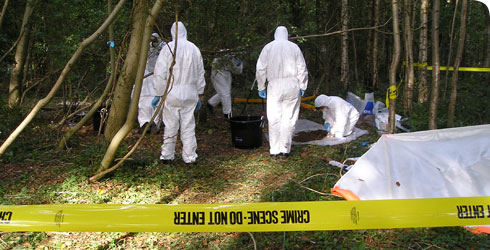 Predicting the postmortem interval of a decedent is a major task of law enforcement. Most methods implemented by death investigators rely on qualitative information (i.e. rigor mortis, livor mortis). Microbes represent 99% of somatic cells in and on a human body.
Predicting the postmortem interval of a decedent is a major task of law enforcement. Most methods implemented by death investigators rely on qualitative information (i.e. rigor mortis, livor mortis). Microbes represent 99% of somatic cells in and on a human body.
No data are available on the use of these organisms to predict the time since death of a decedent, though it is known that certain chemicals, many of which are likely a result of microbial communities, are released by decomposing remains in a reliable pattern. Moreover, the effects of microbes on insect colonization of remains, sometimes the best predictor of a postmortem interval, are not understood. Because of a lack of understanding of microbial succession on decomposing human remains, no standard operating procedures (SOP) for sampling and using this information has been developed and validated.
Professor Jeffery Tomberlin:
Active in the forensic entomology community since 1994, he has examined insect evidence from several investigations throughout the United States prior to accepting a faculty position in the Department of Entomology at Texas A&M University in 2002. Since moving to Texas, he has played a major role with the development of the North American Forensic Entomology Conference and the North American Forensic Entomology Association of which he served as president. Additionally, he is certified by the American Board of Forensic Entomology.
http://video.nationalgeographic.com/video/news/141029-bugs-bodies-csi-vin
Publications
Development and Validation of Standard
Operating Procedures for Measuring Microbial
Populations for Estimating a Postmortem
Interval
F.L.I.E.S. Facility
